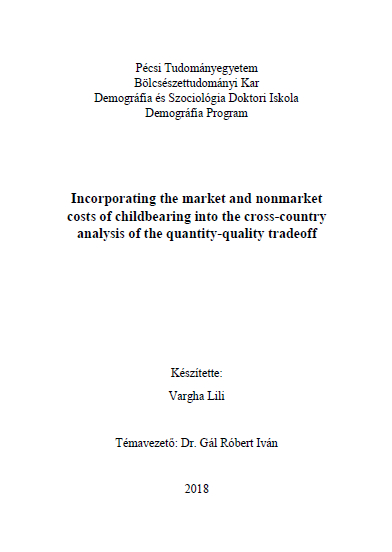Incorporating the market and nonmarket costs of childbearing into the cross-country analysis of the quantity-quality tradeoff
Abstract
The aim of our dissertation is to show how various investments in children are related to fertility in a cross-national comparative context. Following the extended approach of investments in child quality, we consider quality as produced not only by market goods and services, but by inputs of time as well. By giving a comprehensive estimation on the value of household production and its consumption by age, we quantify the value of time devoted to childcare and other household services provided by mostly parents and grandparents at home and consumed by children. Moreover, we integrate the time costs of childbearing with the private and public market expenditure on children. Our measures are based on the National Transfer Accounts (NTA), which disaggregate national accounts by age; as extended by the National Time Transfer Accounts (NTTA), which estimate the same quantities for household production activities using time use surveys. Total investment per child and a narrower concept of human capital investment per child are quantified that include expenditure on education and health as well as the value of childcare provided at home. We calculate the child quality proxies in cross-sections for 25 countries across the globe and analyze their relation with fertility across the countries. Our estimations demonstrate that the main beneficiaries of household goods and services are children. The value of time children receive approximates (in some countries even exceeds) the market resources they are given. The results give empirical evidence on the quantityquality tradeoff, since there is a significant negative association between fertility and investments per child. We also show that once childcare provided at home is incorporated, the relation between quantity and quality is more robust. Furthermore, the findings also indicate that the quantity-quality tradeoff operates via both the market and nonmarket channels.

